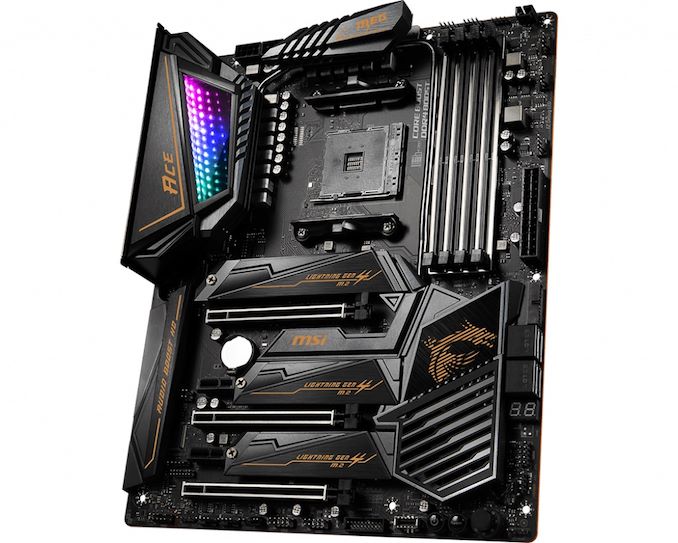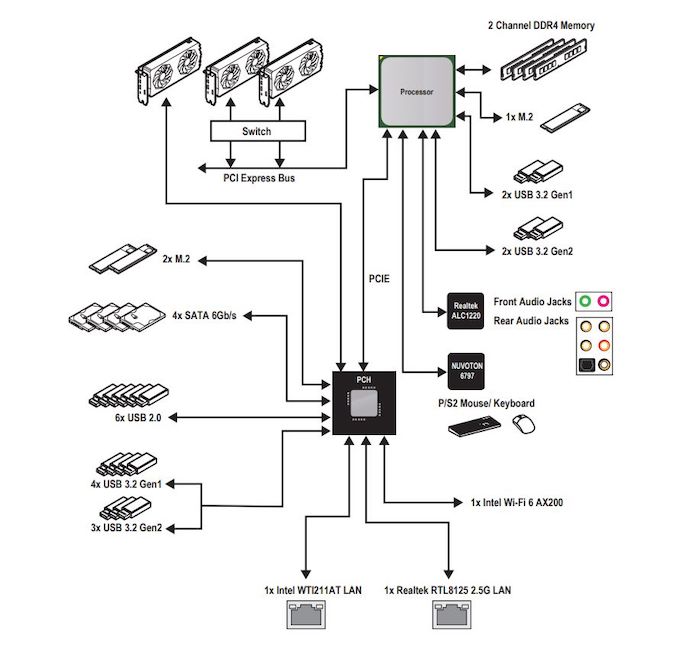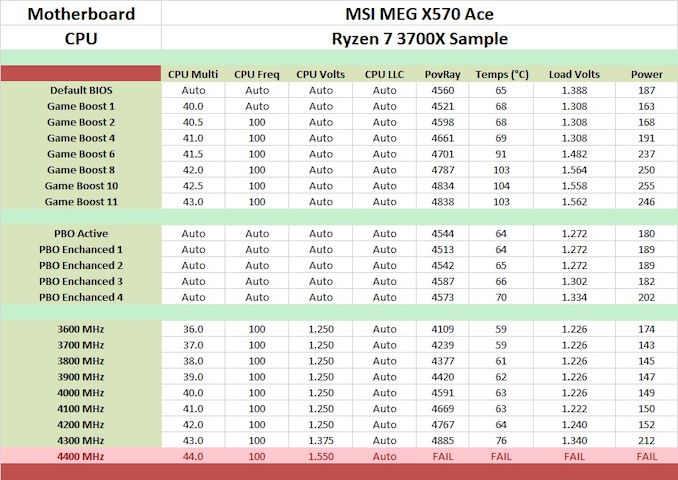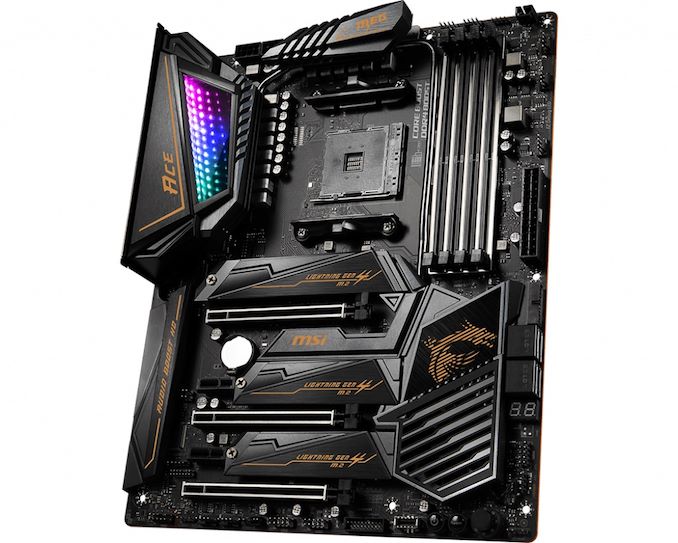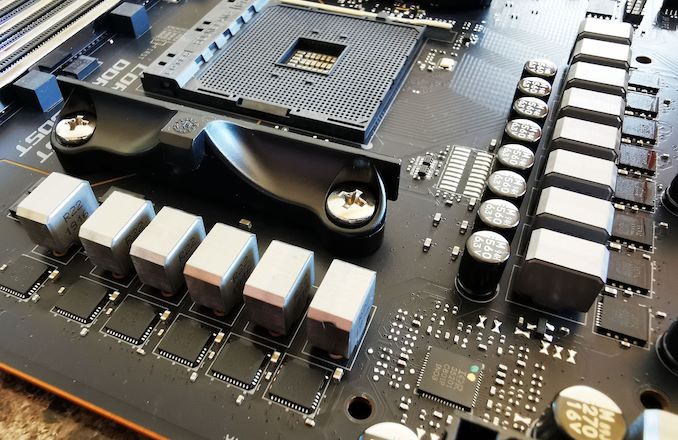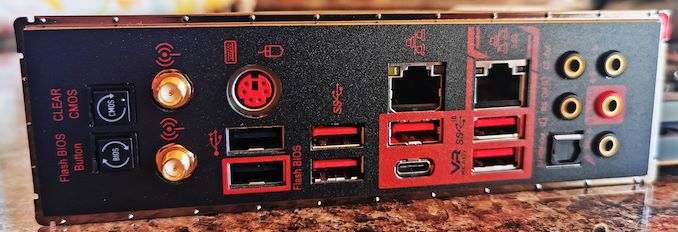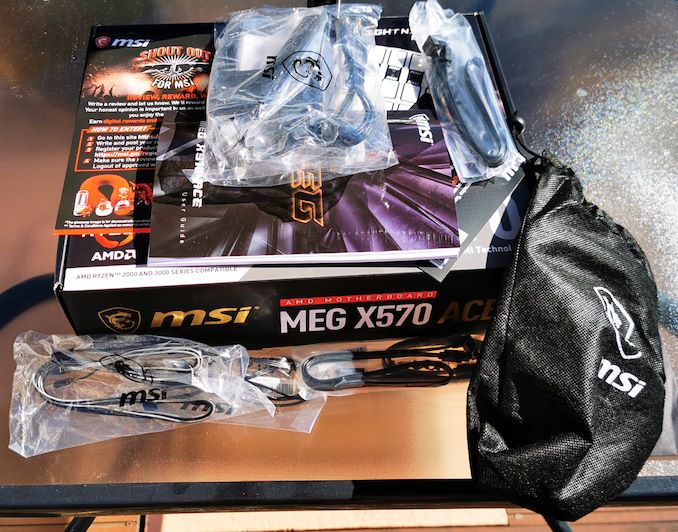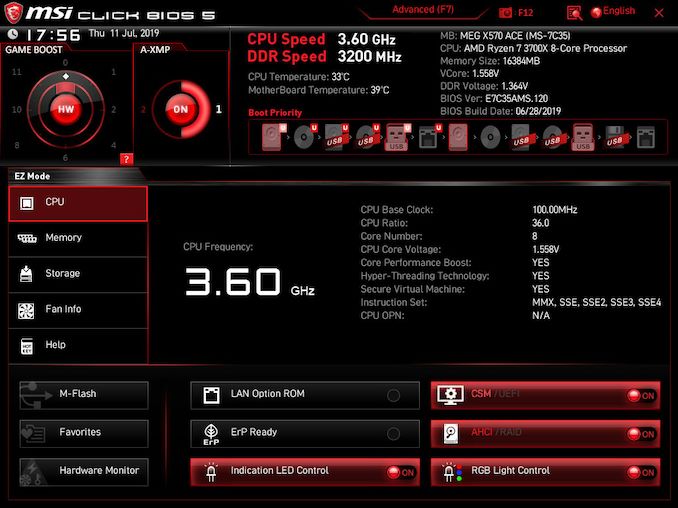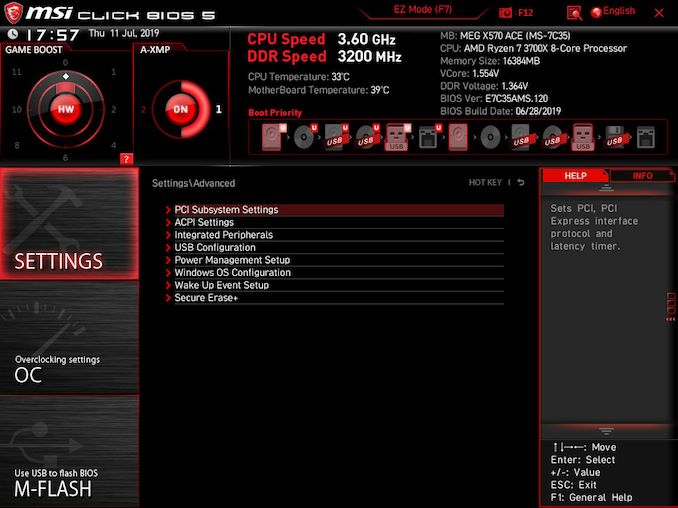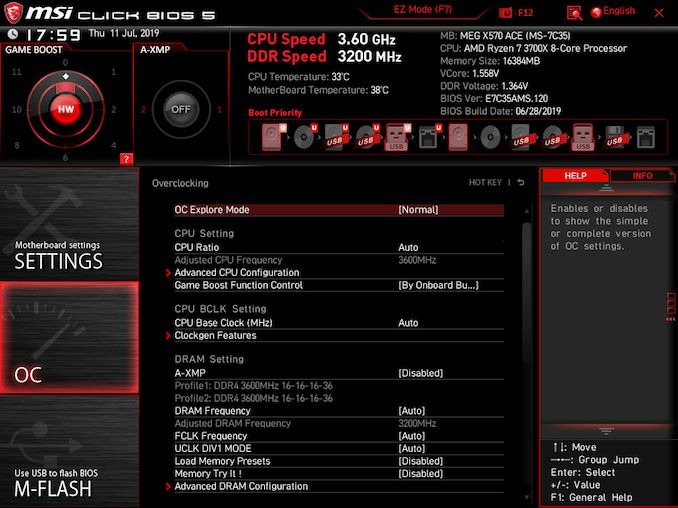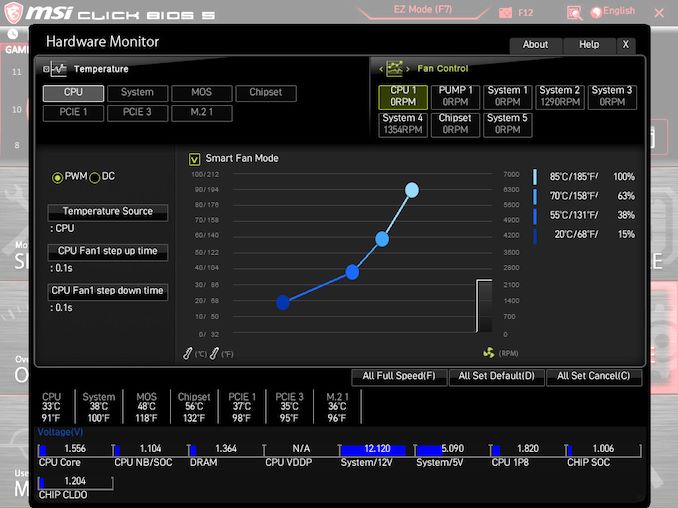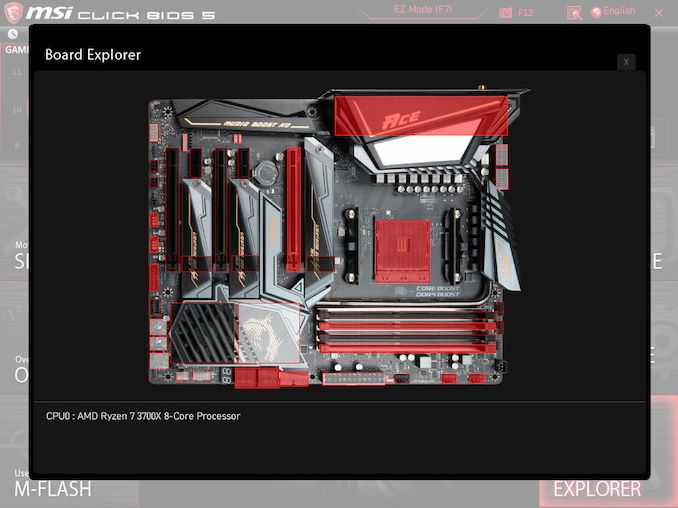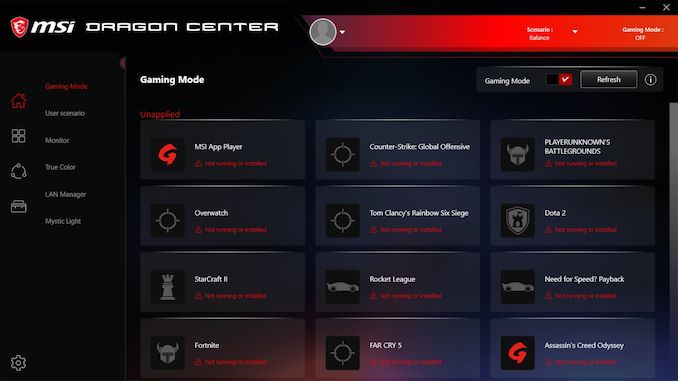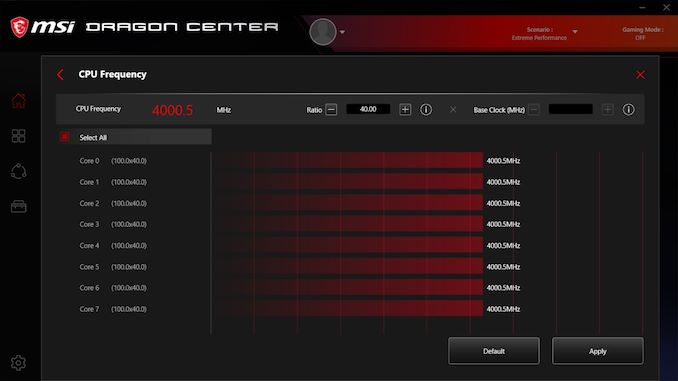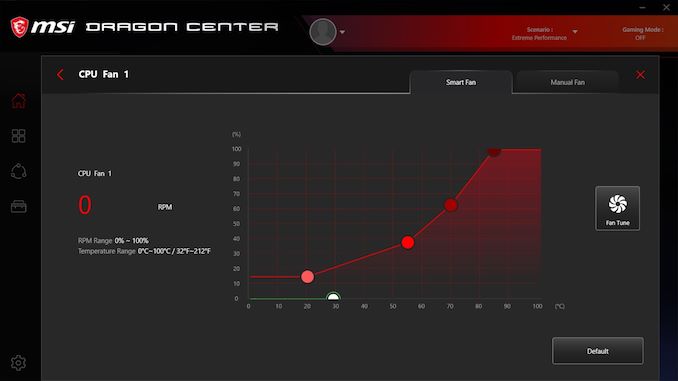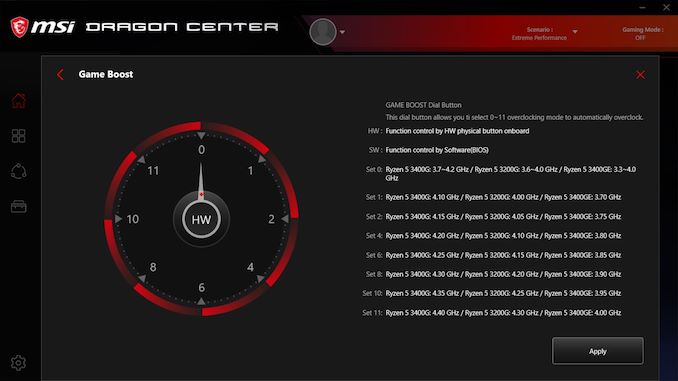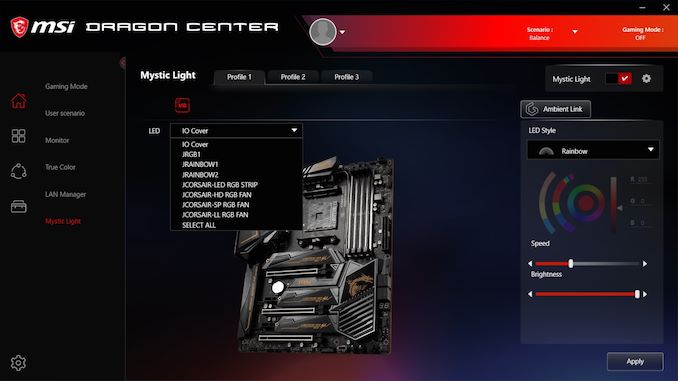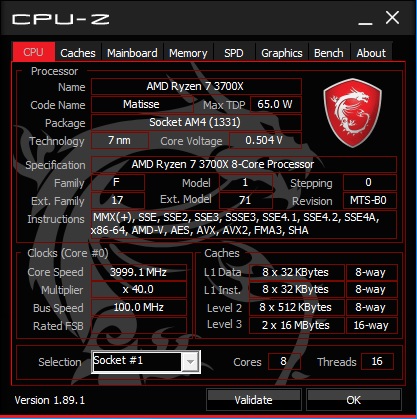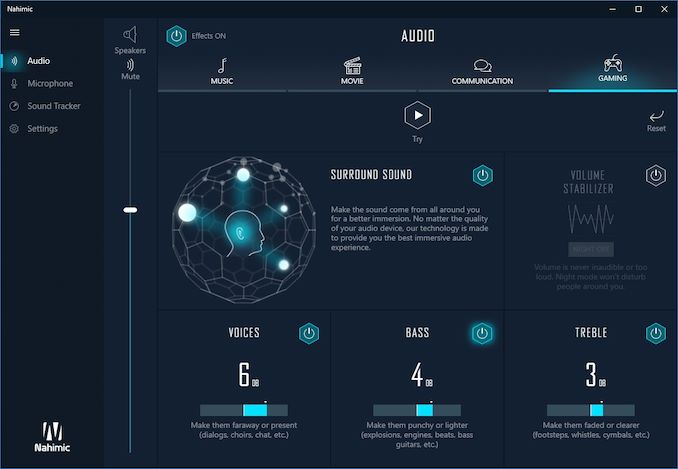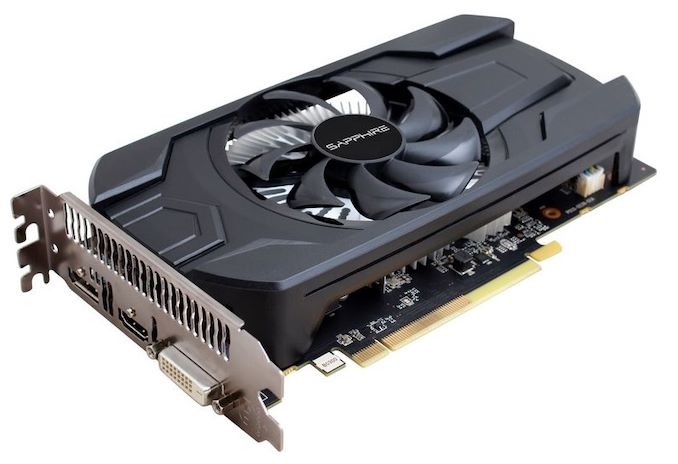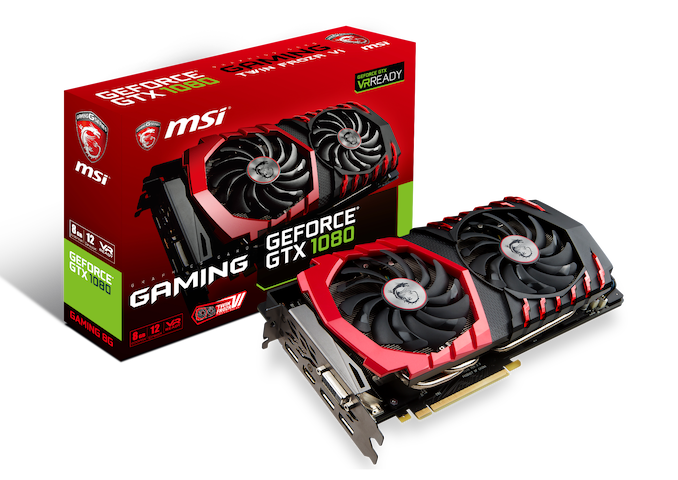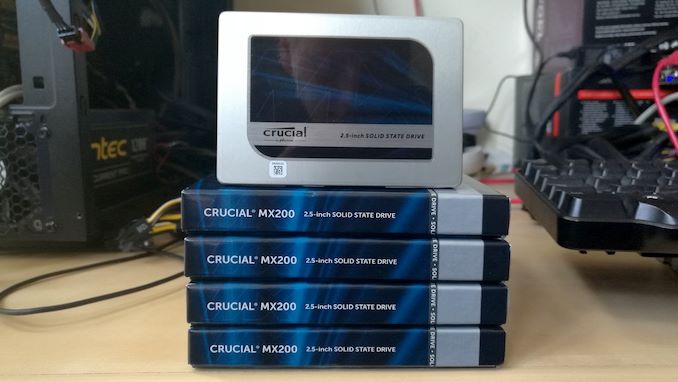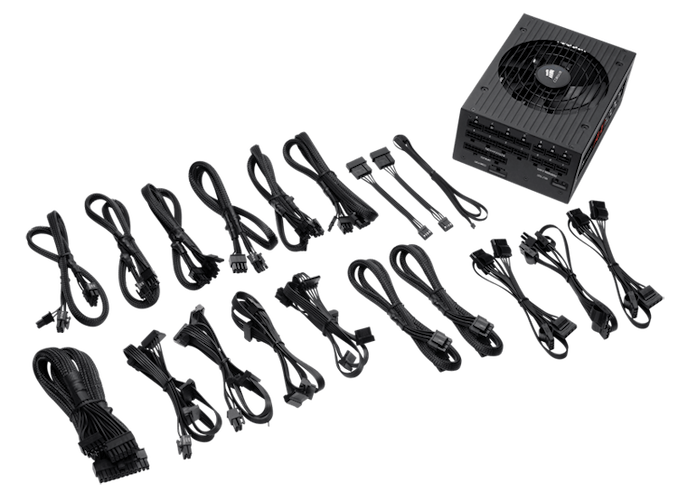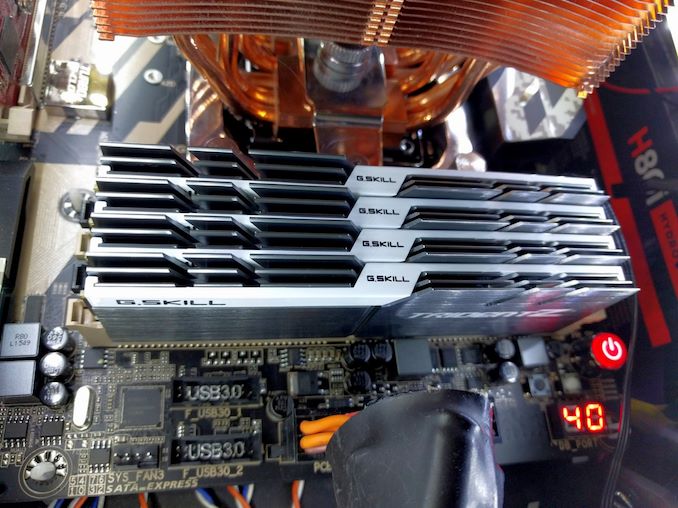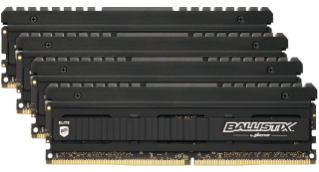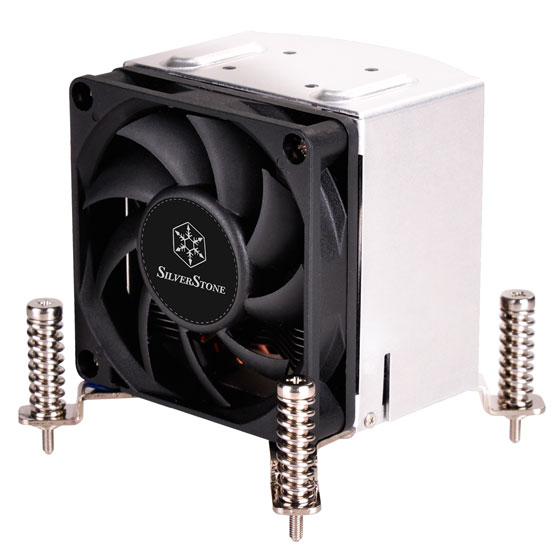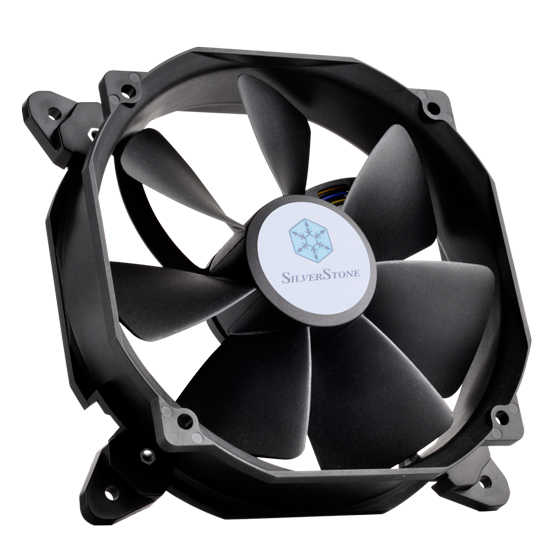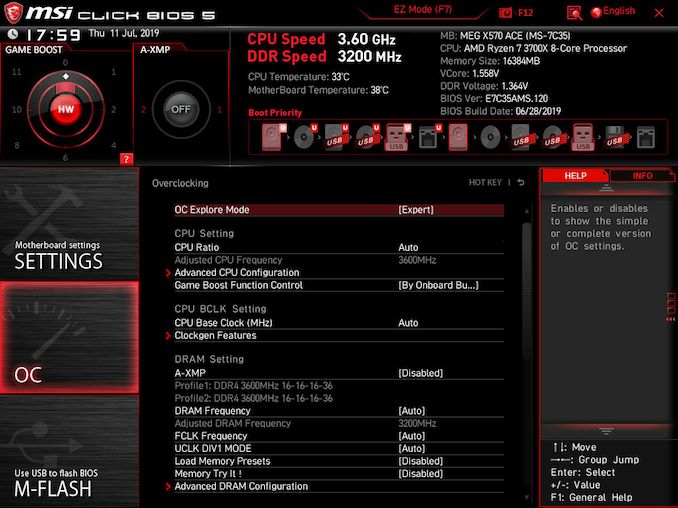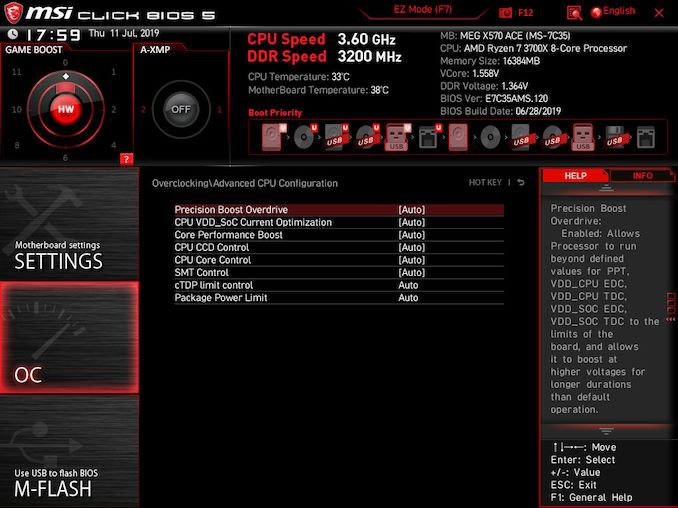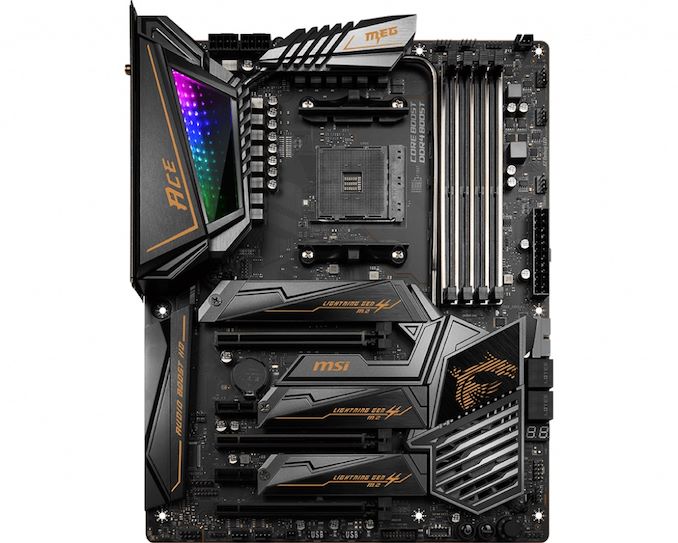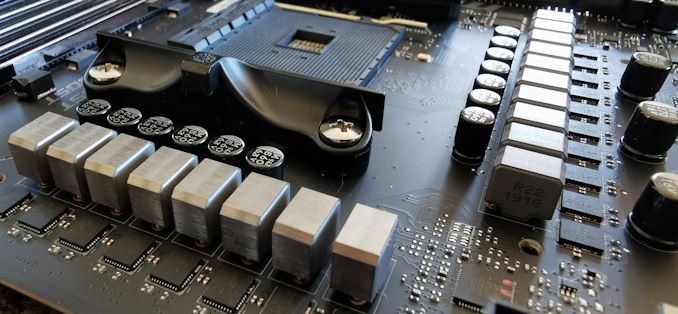
Original Link: https://www.anandtech.com/show/14603/the-msi-meg-x570-ace-motherboard-review
The MSI MEG X570 Ace Motherboard Review: Ace in the Hole at $369
by Gavin Bonshor on July 18, 2019 11:00 AM EST- Posted in
- AMD
- MSI
- Motherboards
- AM4
- Zen 2
- Ryzen 3000
- X570
- MEG
- X570 Ace
- 3700X
- Ryzen 3700X
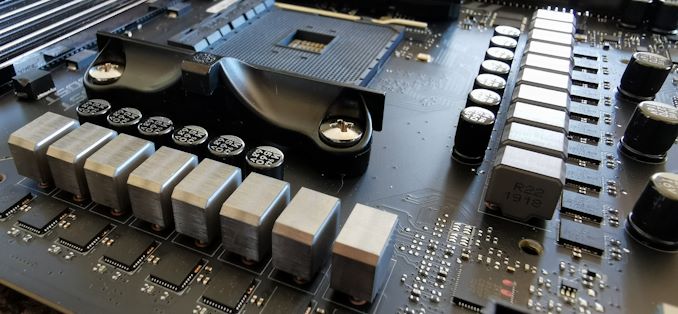
In our first X570 motherboard review we have the MSI MEG X570 Ace. This motherboard represents MSI's high-end range and sits in the top 3 of its product stack. The MEG X570 Ace has a black and gold theme which fits in with AMD's 50 year anniversary, and also includes an 'Infinity Mirror' on the rear panel cover. It's a beefy looking product, and the Ace has a trump card of a price tag of $369 as it offers enthusiast-level features such as a 2.5G Ethernet, a 12+2-phase power delivery, and three PCIe 4.0 x4 M.2 slots, all at a fairly reasonable price.
MSI MEG X570 Ace Overview
The MSI MEG X570 Ace is one of seven motherboards that MSI has for the launch of the X570 chipset, sitting below the $699 Godlike model. The key thing with the MSI MEG X570 Ace is that it is a deviation of the new RGB standard, with similar aesthetics but an an all-black PCB, with black and silver heatsinks and gold accented text. This fits in nicely with AMD's 50-year anniversary theme, and marks it as one of the more unique looking models from the X570 product stack.
A notable design feature is MSI's RGB Infinity Mirror 2, which is integrated into the rear panel cover. The rear panel IO comes attached with a black and red preinstalled IO shield. There is also an LED Debug, a front panel USB 3.1 G2 Type-C, an overclockers toolkit with power/reset buttons, and an MSI Boost dial which gives users the option to use the onboard CPU overclocking profiles without entering the BIOS.
Important features on the MSI X570 Ace include an Intel AX200 802.11ax Wi-Fi 6 wireless interface, as well as a Realtek RTL8125 2.5 Gigabit NIC, and has support for up to three PCIe 4.0 x4 M.2 drives. Each M.2 slot comes supplied with its own individual heatsink and fits in with the design of the actively Zero Frozr cooled X570 chipset heatsink. MSI is advertising a 14-phase power delivery, but we know it's running an International Rectifier IR35201 PWM controller running in a 6+2 configuration with doublers. This means the CPU Vcore element is running a doubled phase design, and the VGT/SoC is running a 2-phase setup. This, in theory, should be more than capable of overclocking 16-core AMD Ryzen 3950X which is due later on this year. The design of the heatsinks means that both power delivery heatsinks are connected to the X570 chipset heatsink via a single heatpipe which runs around the memory slots and is designed to be more efficient at dissipating heat from the warm running chipset and VRMs. Other cooling options include seven 4-pin PWM fan headers which are dotted around the board's edge.
The advancements in AMD's Zen 2 architecture on the 7 nm manufacturing process stretches out to memory performance too as the MSI MEG X570 Ace supports DDR4-4633. Also supported in MSI's X570 product stack are the new 32 GB UDIMMsm which means the X570 Ace can run up to 128 GB of DDR4 memory. For graphics cards, the MSI MEG X570 Ace has two full-length PCIe 4.0 slots from the CPU, which operate in x16 and x8/x8 modes, and another full-length PCIe 4.0 x4 slot from the chipset. This also includes two PCIe 4.0 x1 slots which give users the option to add devices such as dedicated sound cards, and RAID controllers.
The storage capability of the X570 Ace is also impressive, with support for one PCIe 4.0 x4 M.2 drive from the CPU and two from the chipset. There is also four SATA ports with support for RAID 0, 1, and 10 arrays. Onboard audio is handled by a Realtek ALC1220 HD audio codec, while networking is provided by the Intel AX 802.11ax Wi-Fi 6 wireless CNVi interface and Realtek RT8125-AG 2.5 G / Intel I211-AT Gigabit NICs. MSI also includes three USB 3.1 G2 Type-A, a single USB 3.1 G2 Type-C, two USB 3.1 G1 Type-A, and two USB 2.0 ports on the rear panel. The MSI MEG X570 Ace also features a clear CMOS button, a BIOS Flashback button on the rear panel.
MSI MEG X570 Ace Block Diagram
Looking at the performance of the MSI MEG X570 Ace, power consumption is up overall when compared to previous B450 and X470 models we have tested. This is because the X570 chipset has a TDP of 11 W against the previous generations of chipset, which varies from 4 to 6 W. Performance in our updated testbed was favorable to the X570 Ace when paired with our Ryzen 7 3700X processor, and was marginally better when compared with B450 and X470 models we tested. The results will become more extensive as more X570 models make it onto our testbed, but the X570 does perform well, even if it's marginal. Performance in our game testing for the majority was to the benefit of the newer X570 model.
One of the most talked-about aspects of the new Ryzen 3000 processors has been its ability, or lack of ability, to push high overclocks due to a number of variables. These include limitations on the electrical design current (EDC) and the high idle temperatures. Infantile firmware is also currently something that should mature in a progressive manner over the next couple of months, and until AMD work out some of the kinks in Precision Boost Overdrive, users gain most from manually overclocking through the BIOS, or with AMD's Ryzen Master overclocking utility.
In our overclocking performance testing, we managed a solid 4.3 GHz all-core on our Ryzen 7 3700X testbed CPU with a maximum stable voltage of 1.375 V. This is considered good compared to some silicon, but upon trying to push to 4.4 GHz, we hit a brick wall in terms of progression. Performance increased gradually in our POV-Ray benchmark as we increased the CPU core frequency and when we enabled Precision Boost Overdrive, it didn't have a any impact on the performance, but raised the power consumption.
It's clear that the MSI MEG X570 Ace is intended for users looking to create a high-end gaming system with enthusiast-level features. It is designed to squeeze performance out of the new Ryzen 3000 series CPUs. Compared to a number of extreme models, it still has a high price tag of $369, which slots it into the high-end X570 motherboard segment. But it comes with a number of favorable features for those that want to load a system up with the latest hardware.
The MSI MEG X570 Ace is also in direct competition with GIGABYTE's X570 Aorus Master ($359), and the ASUS ROG Crosshair VIII Hero Wi-Fi ($399) which both on paper, are very similar in terms of specifications. These models certainly aren't the respective flagship models, but all three trump the premium models that were available for AMD's X370 and X470 chipset launches, and it shows manufacturers have pumped its support and faith in AMD's new 7 nm Ryzen 3000 series.
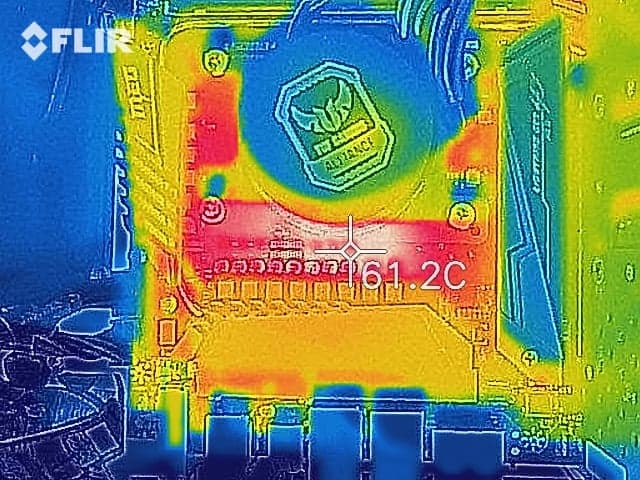
Our new motherboard thermal testing starts today!
Read on for our full review.
Visual Inspection
As it currently stands, the X570 Ace is the part of MSI's MEG branded enthusiast gaming range. The MSI MEG X570 Ace also follows a different design path to almost all of its launch day X570 competition, with an all-black PCB with gold and black designs on all of the heatsinks. This represents and acknowledges AMD's 50 year anniversary, although it isn't specified on the packaging.
In terms of PCIe, the MSI MEG X570 Ace has two full-length PCIe 4.0 slots from the CPU, which run at x16 or x8/x8, and a final full-length PCIe 4.0 x4 slot from the chipset. Also present is two PCIe 4.0 x1 slots, On the board are seven 4-pin fan headers, an LED Debugger located below the SATA ports, a power button, a reset switch, and an MSI Boost dial which allows users to use MSI's pre-defined overclocking profiles without entering the BIOS.
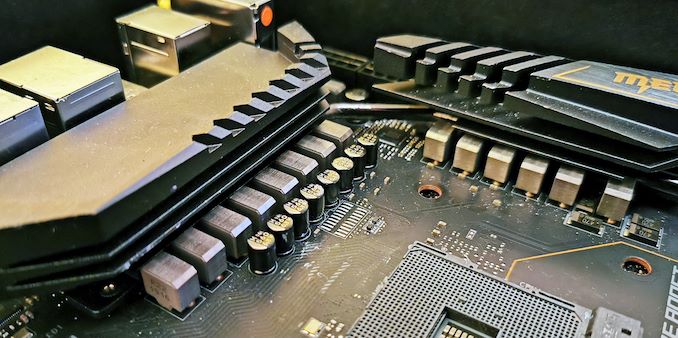
The MSI MEG X570 Ace power delivery heatsink without the rear panel cover
Unlike a lot of other ATX sized X570 motherboards, the X570 Ace features only four SATA ports with support for RAID 0, 1, and 10 arrays. Sandwiched between the full-length PCIe 4.0 slots are three PCIe 4.0 x4 M.2 slots which have their own individual Lightning Gen4 M.2 heatsink. For the memory, the MSI MEG X570 Ace has four memory slots with support for DDR4-4533 and up to a maximum capacity of 128 GB. All of MSI's X570 product stack has been qualified for use with 32 GB UDIMMs with the Samsung 32 GB DDR4-2666 supported out of the box.
As with the MSI MEG X570 Godlike, the MEG X570 Ace does include a fair amount of plastic on the rear panel cover and around the X570 chipset heatsink. This is more forgivable on a non-flagship model such as this, and although it shouldn't affect thermal performance due to the actively cooled chipset heatsink, more metal would give a more premium feel. Located around the edge of the PCB are seven 4-pin PWM fan headers which are divided into one for a CPU fan, five for system fans, and a single 4-pin header dedicated for water pumps.
The MSI MEG X570 Ace sits in third position in MSI's stack; only the X570 Godlike and X570 Creation offering a bigger feature-set and better-equipped power delivery. On the MEG X570 Ace, the PWM controller of choice is the International Rectifier IR35201 which is operating in 6+2 mode with the CPU VCore element opting for 12 x IR3555 60 A power stages which are doubled up with 6 x IR3599 doublers. Providing power to the CPU is two 8-pin 12 V ATX CPU power inputs.
The VGT/SoC is using two individual IR3555 60 A power stages to make up the 6+2 design. Keeping the power delivery cool is a large aluminium heatsink which is connected to the actively cooled X570 chipset heatsink by a single heat pipe. The X570 chipset heatsink fan is powered by MSI's Zero Frozr design which makes it semi-passive with the fan only ramping up when the chipset gets warm, and with integrated PCIe 4.0 lanes, this is sure to add extra work for the heatsink to deal with when compared with previous variants of AMD's AM4 chipsets.
Over on the rear panel, the MSI MEG X570 Ace is three USB 3.1 G2 Type-A, a single USB 3.1 G2 Type-C, two USB 3.1 G1 Type-A, and two USB 2.0 ports. Onboard audio-wise, there are five 3.5 mm audio jacks and a S/PDIF optical output powered by a Realtek ALC1220 HD audio codec, while the two Ethernet ports are each controlled by a Realtek RTL8125-CG 2.5 G and Intel I211-AT Gigabit pairing of NICs. The X570 Ace also includes a Realtek AX1650 Wi-Fi 6 802.11ax wireless interface which also adds BT 5.0 connectivity to the board. Also featured on the rear panel is a Clear CMOS button, a BIOS Flashback switch with a highlighted USB Type-A port for users to update the firmware, and a PS/2 combo keyboard and mouse port. As with other premium X570 models from MSI, the X570 Ace also benefits from a pre-installed IO shield.
What's in the Box
Included within the accessories bundle for the MSI MEG X570 Ace are four SATA cables, four RGB extension cables, an antenna set for the Realtek AX1650 802.11ax Wi-Fi 6 wireless interface, three M.2 installation screws, a driver installation disc, and a user manual. Although not as jam-packed as the X570 Godlike's bundle, the X570 Ace certainly provides everything needed to get a system up and running out of the box, and one area which we will look at in the final review will include the software bundle, which is an area MSI usually go all out on.
- 4 x SATA cables
- RGB LED Y 80 cm extension cable
- Corsair RGB LED 50 cm extension cable
- Rainbow RGB LED 80 cm extension cable
- Corsair to Rainbow RGB 10 cm extension cable
- Killer AX1650 antenna set
- 3 x M.2 installation screws
- Case badge
- Sata cable label sheet
- Product registration card
- Driver installation disc
- User manual
- Quick installation guide
BIOS
MSI is using its Click BIOS 5 firmware which we have seen numerous times before including in our MSI MEG Z390 Ace motherboard review. The design is consistent throughout, with a red and black theme, with white and grey text making up the bulk of the GUI. Users looking to enter the BIOS can do so by pressing the F2 or Del key during POST, with MSI offering two modes to select from: the basic mode or the advanced mode. The advanced mode can be accessed by pressing the F7 key, and it opens up a wide variety of customizable options.
Starting with the basic mode, if offers basic settings including the option to enable or disable CSM/UEFI, enable or disable AHCI and RAID, as well as being able to turn the RGB functionality on or off. However, there are no Mystic Light RGB options in the firmware, so users will need to rely on the MSI Dragon Center software in the OS for this. In the top left-hand corner is the Game Boost button which gives users access to seven different pre-defined overclocking profiles. Users can select whether this is controlled by the hard-wired dial on the board, or via the firmware in software mode. Also to the right of this is an A-XMP button which allows users to enable XMP 2.0 profiles on installed DDR4 memory kits. Towards the top right-hand side is a basic list of information including the installed processor, the firmware version used, basic voltage readings, as well as CPU core clock speed.
Upon pressing the F7 key, users can access the advanced section of the firmware which opens up a number of options which includes enabling or disabling the board's controllers including networking and audio. This is also where users will find PCIe options including setting the full-length slots to PCIe 4.0, PCIe 3.0, although there are usually best left on auto. Other settings such as power management including system power fault protection, ErP, as well as Secure Erase+ for users looking to securely wipe a storage drive before use.
All of the overclocking related settings can be handily found within the OC section and includes options for changing things like CPU core frequency, numerous voltage settings, as well as adjust FCLK frequency and AMD's Precision Boost Overdrive power settings. Users can also alter memory settings with options including DRAM frequency, latency timing control, memory voltage, and six different memory presets for high-performing memory kits capable of achieving tight timings such as DDR4-4400 CL14. MSI also offers four different Precision Boost Overdrive profiles which we have tested over in our overclocking section. Although most users will never be capable of running these settings maxed out, below is a list of limitations using the current firmware for numerous settings including CPU VCore voltage, DRAM frequency, and FCLK frequency:
- Maximum CPU VCore = 2.00 V
- Maximum DRAM Frequency = DDR4-6000
- Maximum FCLK Frequency = 3000 MHz
A usual feature of MSI's Click BIOS 5 is the hardware monitor which allows users to keep track of variables including temperature, and fan speed. Users can also customize fan curve profiles for more efficient cooling and with the heat generated by the new AMD Ryzen 3000 processors, it's something users should pay close attention to. Options to select between PWM and DC mode is welcomed, as well as being able to mass select all the fans to full-speed or back to default settings. It would have been nice for MSI to include this to fan profiles, as currently, users will have to create a fan profile for each individual fan installed.
Another common feature included with MSI's Click BIOS 5 firmware is an interactive board explorer. Users can explore a visual representation of the MSI MEG X570 Ace from a birds-eye view. When a component or device is installed/plugged into the board, each area is highlighted in red and hovering over each section provides basic information about what's installed. This includes the processor, memory, storage, front panel headers including 4-pin fan headers, the rear panel, and the PCIe 4.0 slots. It's not exactly groundbreaking, but it could prove useful for diagnosing dead connections, devices, and headers.
Whether it's down to the infancy of the X570 chipset and some issues still need working out, the Click BIOS 5 firmware was very temperamental at times and generally quite laggy. I raised this issue with MSI and they had informed us that we weren't the first to experience lag within the BIOS. Even with the latest firmware, the user experience was a little lacklustre and it's something that will hopefully get better with time. As it stands, the firmware has plenty of customizable options designed to push the Ryzen 3000 processors safely beyond its limits. MSI usually provide one of the better-looking firmware designs on the market, but in this case, it's let down by shoddy mouse and keyboard response which when overclocking, and changing power settings, could result in accidental damage to hardware if users aren't careful. If in doubt, overclock using the AMD Ryzen Master utility as it's one of the better-implemented pieces of overclocking software around.
Software
Normally with a massive variety of individual software and utilities, MSI has finally condensed things right down to just a handful. Usually, we expect a different application for every aspect of the feature set including RGB, audio, overclocking, even for things such as network traffic shaping. Moving forward and progressing into 2019 and MSI has wrapped up all of its key software into an intuitive, and well laid out application called the MSI Dragon Center. Also included with MSI's software bundle is a custom MSI Gaming themed CPU-Z monitoring utility.
The MSI Dragon Center amalgamates all of its core software features into one easy to use, and aesthetically pleasing red and black themed application. Within the Dragon Center is the Gaming mode which is designed to optimize settings based on the game being played. This includes presets for games such as Dota 2, Rocket League and even Fortnite. On the left-hand side is a menu which features the user scenario option which allows users to customize performance attributes, and even do overclocking without needing to enter the firmware. Also present is MSI True Color which offers different visual profiles for activities such as gaming, movies, and for when your eyes are tired, EyeRest. Next is MSI's traffic shaping LAN manager for the Realtek RTL8125AG 2.5 G and Intel I211-AT NICs, and at the bottom is the Mystic Light RGB utility which allows users to customize the boards RGB LEDs.
Nestled into the User Scenario section are options to overclock the installed processor with basic options for CPU core frequency, associated voltage options including CPU VCore, SoC voltage, as well as basic memory overclocking options such as DRAM frequency, making alterations to the primary timings, and DRAM voltage. Users looking for a more comprehensive overclocking utility, the AMD Ryzen Master software works very well and is a lot more intuitive and comprehensive than MSI's offering at present.
Similar to what's included in the firmware, the MSI Dragon Center also includes a basic Smart Fan utility. This gives users the ability to set custom fan profiles based on four different temperature points. For users looking to take more control, the Manual Fan option allows users to individually set each of the boards seven 4-pin headers to whatever fan speed they wish. The Fan Tune setting gives the MSI MEG X570 Ace the nod to judge the cooling conditions and automatically set fan profiles based on what it thinks is optimal.
Replicating the options in the BIOS and offering what Game Boost does dial which is present on the bottom right-hand corner of the PCB, is a section in the Dragon Center utility aptly called Game Boost. Unlike in the firmware, the software actually highlights the profiles settings in terms of CPU core frequency for three different CPUs; in our case the Ryzen 5 3400G, Ryzen 5 3200G, and Ryzen 5 3400GE APUs. Disappointingly, it didn't give us the settings for the Ryzen 7 3700X which is installed which would have been useful to know. Perhaps this is something MSI can work on for future versions of the software to automatically detect the CPU installed, and offer information of the profiles based on that.
For customizing the various onboard RGB LED capabilities of the MSI MEG X570, MSI has included the Mystic Light RGB utility within the confines of the Dragon Center application. Users can synchronize all of the integrated RGB LEDs with the four different RGB headers and three Corsair RGB fan connectors, or individually customize it to create a mish-mash of RGB lighting. MSI includes an extensive list of lighting profiles ranging from its Rainbow mode, the more commonly seen breathing, flashing, random modes, as well as the Lightning mode and CPU temperature modes; the CPU temperature mode is good for users who want a visual representation of the current temperature of the processor.
It wouldn't be a complete software suite without the inclusion of a custom skinned CPU-Z monitoring utility, and MSI incorporates its Gaming Dragon theme. The current version at the time of the review is 1.89.1, but MSI should update this with each new build released by its creator, CPUID.
To assist its Realtek ALC1220 HD audio codec, MSI opts for the Nahimic 3 audio software which MSI are in a current partnership with to develop custom audio solutions for its gaming branded motherboards and gaming laptops. Similar to the functions of what Creative offer with its audio solutions, there are customizable options for microphone, audio profiles for music, movie, communication applications and gaming, as well as adjustable bass and treble to fine-tune the auditory experience. The sound tracker is highly useful in games such as FPS titles where a visual representation of where a sound came from such as a gunshot is displayed on the screen.
Users looking for audio software out of the box will, unfortunately, be disappointed. We've suggested this multiple times previously, but it is insisted that users download even the basic Realtek Audio Control Panel and the Nahimic 3 software directly from the Microsoft Store. Aside from this, MSI has made a positive move forward by reducing the number of separate software applications and has rolled it down into one easy to use and intuitive application. Perhaps MSI could incorporate something auditory into the Dragon Center without the need to download sound applications directly from the Microsoft Store.
Board Features
The MSI MEG X570 Ace sits towards the higher end of the range of X570 motherboards with a price tag of $369. For the price though, MSI has included a premium controller set which includes a Realtek ALC1220 HD audio codec, a Realtek RTL8125-AG 2.5 G port and a Intel I211-AT Gigabit port, and also includes an Intel AX200 Wi-Fi 6 802.11ax wireless interface; this also adds support for BT 5 devices too. Providing power to the 14-phase power delivery are two 8-pin 12 V ATX CPU power inputs, while the board and other componentry take its power from a 24-pin ATX 12 V power input. Its cooling comes from seven 4-pin PWM enabled headers which are split into three main sections; one for a CPU fan, one for a water pump, and five for case fans.
| MSI MEG X570 Ace ATX Motherboard | |||
| Warranty Period | 3 Years | ||
| Product Page | Link | ||
| Price | $369 | ||
| Size | ATX | ||
| CPU Interface | AM4 | ||
| Chipset | AMD X570 | ||
| Memory Slots (DDR4) | Four DDR4 Supporting 128 GB Dual Channel Up to DDR4-4633 |
||
| Video Outputs | N/A | ||
| Network Connectivity | Realtek RTL8125-AG 2.5 Gigabit Intel I211-AT Gigabit Intel AX200 Wi-Fi 6 802.11ax |
||
| Onboard Audio | Realtek ALC1220 | ||
| PCIe Slots for Graphics (from CPU) | 2 x PCIe 4.0 x16 (x16 or x8/x8) | ||
| PCIe Slots for Other (from PCH) | 1 x PCIe 4.0 x4 2 x PCIe 4.0 x1 |
||
| Onboard SATA | Four, RAID 0/1/10 | ||
| Onboard M.2 | 2 x PCIe 3.0 x4/SATA 1 x PCIe 3.0 x4/x2 |
||
| USB 3.1 (10 Gbps) | 3 x Type-A Rear Panel 1 x Type-C Rear Panel 1 x Type-C Header |
||
| USB 3.0 (5 Gbps) | 2 x Type-A Rear Panel 2 x Header (four ports) |
||
| USB 2.0 | 2 x Type-A Rear Panel 2 x Header (four ports) |
||
| Power Connectors | 1 x 24-pin ATX 2 x 8pin CPU |
||
| Fan Headers | 1 x CPU (4-pin) 1 x Water Pump (4-pin) 5 x System (4-pin) |
||
| IO Panel | 3 x USB 3.1 G2 Type-A 1 x USB 3.1 G2 Type-C 2 x USB 3.1 G1 Type-A 2 x USB 2.0 Type-A 2 x Network RJ45 (Realtek/Intel) 5 x 3.5mm Audio Jacks (Realtek) 1 x S/PDIF Output (Realtek) 2 x Intel AX200 Antenna Ports 1 x BIOS Flashback Button 1 x Clear CMOS Button |
||
One thing of note is that this model doesn't include any video outputs on the rear panel, but it does include three USB 3.1 G2 Type-A, one USB 3.1 G2 Type-C, two USB 3.1 G1 Type-A, and two USB 2.0 ports. It's always handy to have a dedicated clear CMOS button somewhere on the PCB instead of the older style jumper, but MSI has implemented this on its rear panel along with a pre-installed rear IO shield to make it easier for users to install it into a chassis. For storage, the MSI MEG X570 Ace has three PCIe 4.0 x4 M.2 slots with two including support for SATA drives and taking its lanes directly from the X570 chipset. The CPU drove PCIe 4.0 x4 M.2 slot doesn't support SATA drives for reference and is located just underneath the AM4 CPU socket.
Test Bed
As per our testing policy, we take a high-end CPU suitable for the motherboard that was released during the socket’s initial launch and equip the system with a suitable amount of memory running at the processor maximum supported frequency. This is also typically run at JEDEC subtimings where possible. It is noted that some users are not keen on this policy, stating that sometimes the maximum supported frequency is quite low, or faster memory is available at a similar price, or that the JEDEC speeds can be prohibitive for performance. While these comments make sense, ultimately very few users apply memory profiles (either XMP or other) as they require interaction with the BIOS, and most users will fall back on JEDEC supported speeds - this includes home users as well as industry who might want to shave off a cent or two from the cost or stay within the margins set by the manufacturer. Where possible, we will extend out testing to include faster memory modules either at the same time as the review or a later date.
While we have been able to measure audio performance from previous Z370 motherboards, the task has been made even harder with the roll-out of the Z390 chipset and none of the boards tested so far has played ball. It seems all USB support for Windows 7 is now extinct so until we can find a reliable way of measuring audio performance on Windows 10 or until a workaround can be found, audio testing will have to be done at a later date.
| Test Setup | |||
| Processor | AMD Ryzen 3700X, 65W, $329 8 Cores, 16 Threads, 3.6 GHz (4.4 GHz Turbo) |
||
| Motherboard | MSI MEG X570 Ace (BIOS 7C35v12) | ||
| Cooling | ID Cooling Auraflow 240mm AIO | ||
| Power Supply | Thermaltake Toughpower Grand 1200W Gold PSU | ||
| Memory | 2x8GB G.Skill TridentZ DDR4-3200 16-16-16-36 2T | ||
| Video Card | ASUS GTX 980 STRIX (1178/1279 Boost) | ||
| Hard Drive | Crucial MX300 1TB | ||
| Case | Open Benchtable BC1.1 (Silver) | ||
| Operating System | Windows 10 1903 inc. Spectre/Meltdown Patches | ||
Readers of our motherboard review section will have noted the trend in modern motherboards to implement a form of MultiCore Enhancement / Acceleration / Turbo (read our report here) on their motherboards. This does several things, including better benchmark results at stock settings (not entirely needed if overclocking is an end-user goal) at the expense of heat and temperature. It also gives, in essence, an automatic overclock which may be against what the user wants. Our testing methodology is ‘out-of-the-box’, with the latest public BIOS installed and XMP enabled, and thus subject to the whims of this feature. It is ultimately up to the motherboard manufacturer to take this risk – and manufacturers taking risks in the setup is something they do on every product (think C-state settings, USB priority, DPC Latency / monitoring priority, overriding memory sub-timings at JEDEC). Processor speed change is part of that risk, and ultimately if no overclocking is planned, some motherboards will affect how fast that shiny new processor goes and can be an important factor in the system build.
New Test Suite: Spectre and Meltdown Hardened
Since the start of our Z390 reviews, we are using an updated OS, updated drivers, and updated software. This is in line with our CPU testing updates, which includes Spectre and Meltdown patches. We are also running the testbed with the new Windows 10 1903 update for AMD's Ryzen 3000 series CPUs, and X570 motherboard reviews. The Windows 1903 update improves multi-core and multi-thread performance on AMD's Ryzen processors with topology awareness meaning previous issues in regards to latency have been known to affect performance. As users are recommended to keep their Windows 10 operating system updates, our performance data is reflected with the 1903 update.
System Performance
Not all motherboards are created equal. On the face of it, they should all perform the same and differ only in the functionality they provide - however, this is not the case. The obvious pointers are power consumption, but also the ability for the manufacturer to optimize USB speed, audio quality (based on audio codec), POST time and latency. This can come down to the manufacturing process and prowess, so these are tested.
For X570 we are running using Windows 10 64-bit with the 1903 update as per our Ryzen 3000 CPU review.
Power Consumption
Power consumption was tested on the system while in a single ASUS GTX 980 GPU configuration with a wall meter connected to the Thermaltake 1200W power supply. This power supply has ~75% efficiency > 50W, and 90%+ efficiency at 250W, suitable for both idle and multi-GPU loading. This method of power reading allows us to compare the power management of the UEFI and the board to supply components with power under load, and includes typical PSU losses due to efficiency. These are the real world values that consumers may expect from a typical system (minus the monitor) using this motherboard.
While this method for power measurement may not be ideal, and you feel these numbers are not representative due to the high wattage power supply being used (we use the same PSU to remain consistent over a series of reviews, and the fact that some boards on our test bed get tested with three or four high powered GPUs), the important point to take away is the relationship between the numbers. These boards are all under the same conditions, and thus the differences between them should be easy to spot.
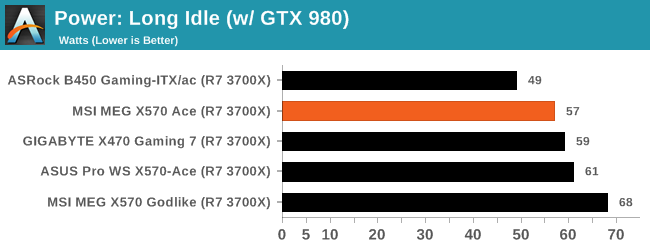
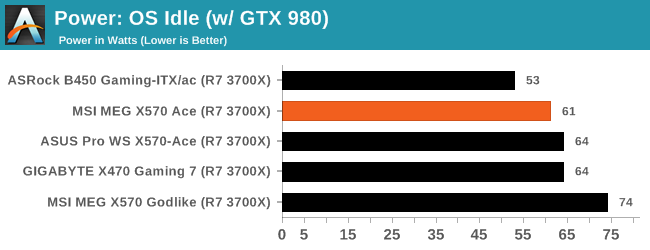
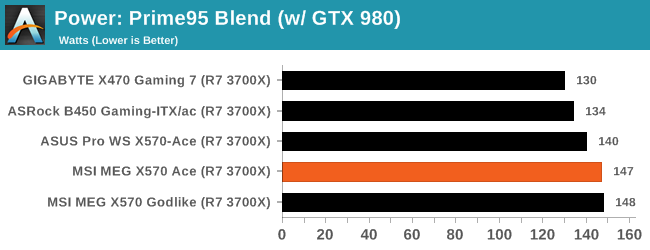
The power consumption when compared with X470 and B450 motherboards, we need to be aware of the difference in the TDP of the chipsets; 11 W for the X570 against the 4.8 W of the X470 and B450. Despite this, the MSI MEG X570 Ace actually performed better than the GIGABYTE X470 Gaming 7 model in both idle, and long idle power states. When placed under full load, the X570 Ace as expected ploughed ahead in terms of power consumption with a total of 147 W in our Prime95 blend test.
Non-UEFI POST Time
Different motherboards have different POST sequences before an operating system is initialized. A lot of this is dependent on the board itself, and POST boot time is determined by the controllers on board (and the sequence of how those extras are organized). As part of our testing, we look at the POST Boot Time using a stopwatch. This is the time from pressing the ON button on the computer to when Windows starts loading. (We discount Windows loading as it is highly variable given Windows specific features.)
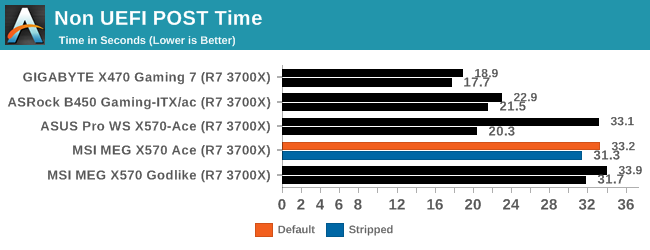
In our POST time test, the MSI MEG X570 Ace took noticeably longer to boot into Windows 10 by a good 10 seconds which is slightly disappointing. Even disabling networking and audio controllers, we only managed to shave just under 2 seconds off the POST time compared with default settings applied.
DPC Latency
Deferred Procedure Call latency is a way in which Windows handles interrupt servicing. In order to wait for a processor to acknowledge the request, the system will queue all interrupt requests by priority. Critical interrupts will be handled as soon as possible, whereas lesser priority requests such as audio will be further down the line. If the audio device requires data, it will have to wait until the request is processed before the buffer is filled.
If the device drivers of higher priority components in a system are poorly implemented, this can cause delays in request scheduling and process time. This can lead to an empty audio buffer and characteristic audible pauses, pops and clicks. The DPC latency checker measures how much time is taken processing DPCs from driver invocation. The lower the value will result in better audio transfer at smaller buffer sizes. Results are measured in microseconds.
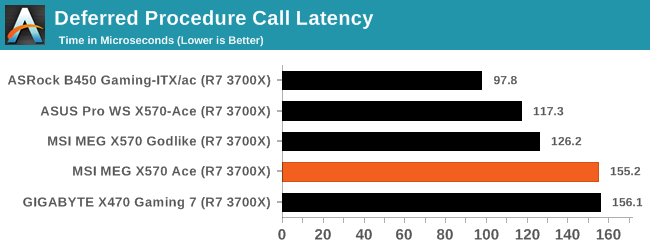
We test DPC at default settings, out of the box, and the MSI MEG X570 Ace performs marginally better than the GIGABYTE X470 Gaming 7, while ASRock models do generally tend to do a little better in this test.
CPU Performance, Short Form
For our motherboard reviews, we use our short form testing method. These tests usually focus on if a motherboard is using MultiCore Turbo (the feature used to have maximum turbo on at all times, giving a frequency advantage), or if there are slight gains to be had from tweaking the firmware. We put the memory settings at the CPU manufacturers suggested frequency, making it very easy to see which motherboards have MCT enabled by default.
For X570 we are running using Windows 10 64-bit with the 1903 update as per our Ryzen 3000 CPU review.
Rendering - Blender 2.7b: 3D Creation Suite - link
A high profile rendering tool, Blender is open-source allowing for massive amounts of configurability, and is used by a number of high-profile animation studios worldwide. The organization recently released a Blender benchmark package, a couple of weeks after we had narrowed our Blender test for our new suite, however their test can take over an hour. For our results, we run one of the sub-tests in that suite through the command line - a standard ‘bmw27’ scene in CPU only mode, and measure the time to complete the render.
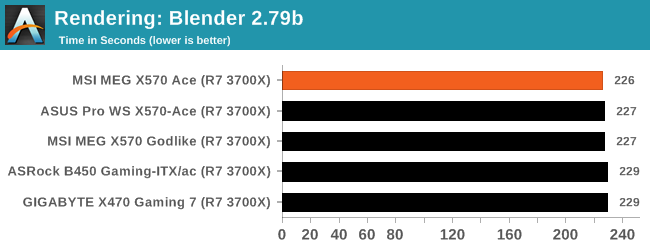
Streaming and Archival Video Transcoding - Handbrake 1.1.0
A popular open source tool, Handbrake is the anything-to-anything video conversion software that a number of people use as a reference point. The danger is always on version numbers and optimization, for example the latest versions of the software can take advantage of AVX-512 and OpenCL to accelerate certain types of transcoding and algorithms. The version we use here is a pure CPU play, with common transcoding variations.
We have split Handbrake up into several tests, using a Logitech C920 1080p60 native webcam recording (essentially a streamer recording), and convert them into two types of streaming formats and one for archival. The output settings used are:
- 720p60 at 6000 kbps constant bit rate, fast setting, high profile
- 1080p60 at 3500 kbps constant bit rate, faster setting, main profile
- 1080p60 HEVC at 3500 kbps variable bit rate, fast setting, main profile
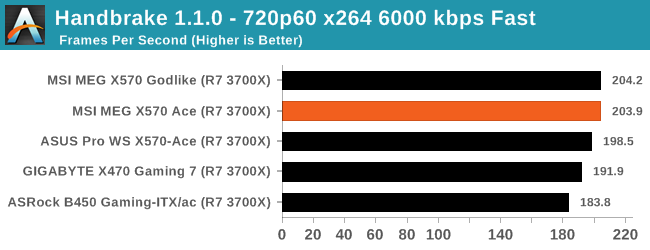
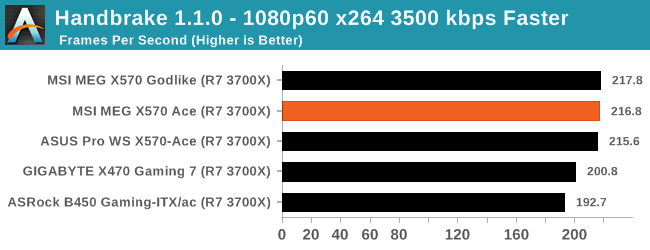
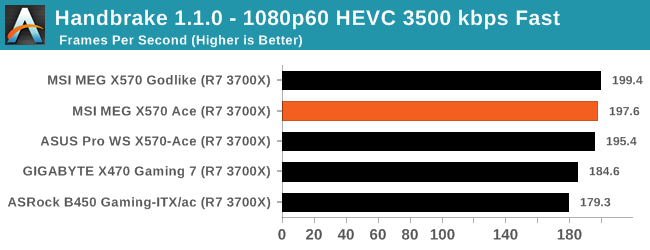
Rendering – POV-Ray 3.7.1: Ray Tracing - link
The Persistence of Vision Ray Tracer, or POV-Ray, is a freeware package for as the name suggests, ray tracing. It is a pure renderer, rather than modeling software, but the latest beta version contains a handy benchmark for stressing all processing threads on a platform. We have been using this test in motherboard reviews to test memory stability at various CPU speeds to good effect – if it passes the test, the IMC in the CPU is stable for a given CPU speed. As a CPU test, it runs for approximately 1-2 minutes on high-end platforms.
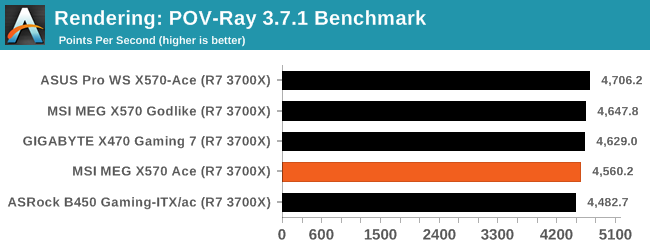
Compression – WinRAR 5.60b3: link
Our WinRAR test from 2013 is updated to the latest version of WinRAR at the start of 2014. We compress a set of 2867 files across 320 folders totaling 1.52 GB in size – 95% of these files are small typical website files, and the rest (90% of the size) are small 30-second 720p videos.
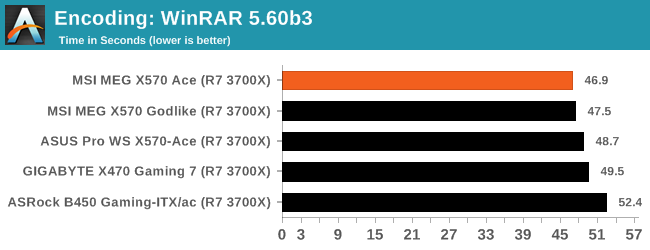
Synthetic – 7-Zip v1805: link
Out of our compression/decompression tool tests, 7-zip is the most requested and comes with a built-in benchmark. For our test suite, we’ve pulled the latest version of the software and we run the benchmark from the command line, reporting the compression, decompression, and a combined score.
It is noted in this benchmark that the latest multi-die processors have very bi-modal performance between compression and decompression, performing well in one and badly in the other. There are also discussions around how the Windows Scheduler is implementing every thread. As we get more results, it will be interesting to see how this plays out.
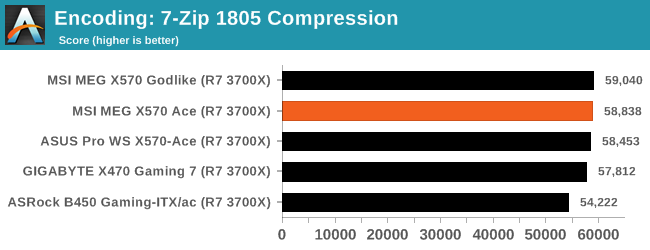
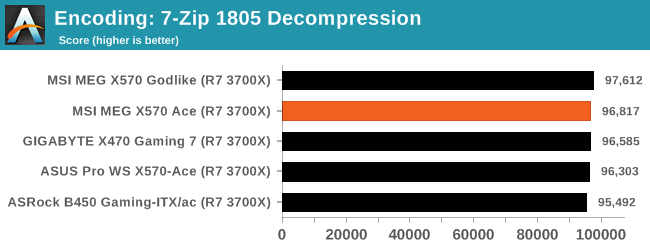
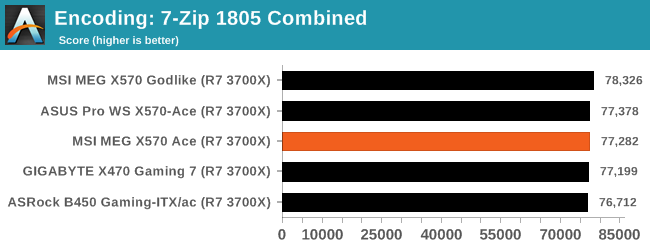
Point Calculations – 3D Movement Algorithm Test: link
3DPM is a self-penned benchmark, taking basic 3D movement algorithms used in Brownian Motion simulations and testing them for speed. High floating point performance, MHz, and IPC win in the single thread version, whereas the multithread version has to handle the threads and loves more cores. For a brief explanation of the platform agnostic coding behind this benchmark, see my forum post here.
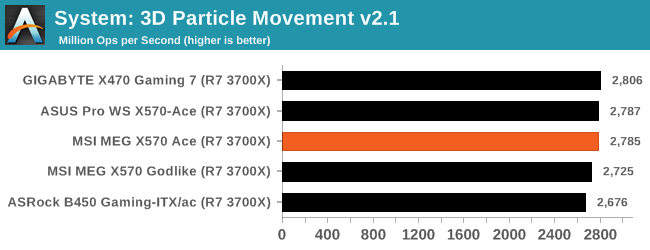
Neuron Simulation - DigiCortex v1.20: link
The newest benchmark in our suite is DigiCortex, a simulation of biologically plausible neural network circuits, and simulates activity of neurons and synapses. DigiCortex relies heavily on a mix of DRAM speed and computational throughput, indicating that systems which apply memory profiles properly should benefit and those that play fast and loose with overclocking settings might get some extra speed up. Results are taken during the steady-state period in a 32k neuron simulation and represented as a function of the ability to simulate in real time (1.000x equals real-time).
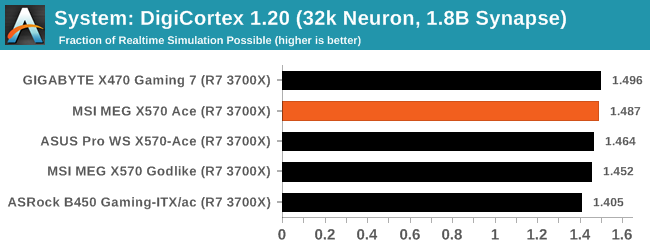
Gaming Performance
For X570 we are running using Windows 10 64-bit with the 1903 update as per our Ryzen 3000 CPU review.
World of Tanks enCore
Albeit different to most of the other commonly played MMO or massively multiplayer online games, World of Tanks is set in the mid-20th century and allows players to take control of a range of military based armored vehicles. World of Tanks (WoT) is developed and published by Wargaming who are based in Belarus, with the game’s soundtrack being primarily composed by Belarusian composer Sergey Khmelevsky. The game offers multiple entry points including a free-to-play element as well as allowing players to pay a fee to open up more features. One of the most interesting things about this tank based MMO is that it achieved eSports status when it debuted at the World Cyber Games back in 2012.
World of Tanks enCore is a demo application for a new and unreleased graphics engine penned by the Wargaming development team. Over time the new core engine will implemented into the full game upgrading the games visuals with key elements such as improved water, flora, shadows, lighting as well as other objects such as buildings. The World of Tanks enCore demo app not only offers up insight into the impending game engine changes, but allows users to check system performance to see if the new engine run optimally on their system.
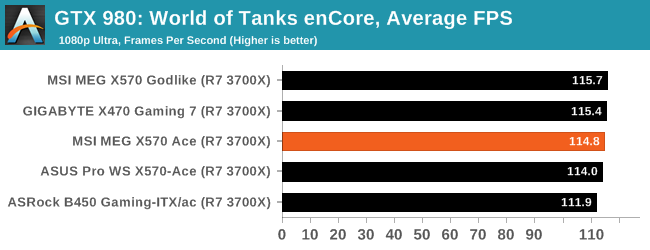
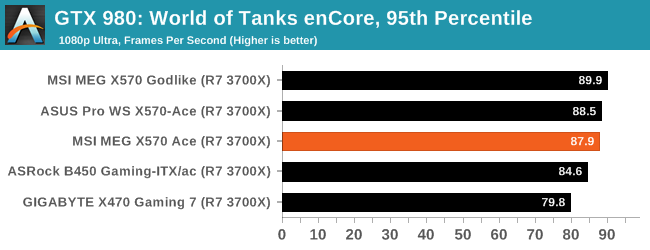
Grand Theft Auto V
The highly anticipated iteration of the Grand Theft Auto franchise hit the shelves on April 14th 2015, with both AMD and NVIDIA in tow to help optimize the title. GTA doesn’t provide graphical presets, but opens up the options to users and extends the boundaries by pushing even the hardest systems to the limit using Rockstar’s Advanced Game Engine under DirectX 11. Whether the user is flying high in the mountains with long draw distances or dealing with assorted trash in the city, when cranked up to maximum it creates stunning visuals but hard work for both the CPU and the GPU.
For our test we have scripted a version of the in-game benchmark. The in-game benchmark consists of five scenarios: four short panning shots with varying lighting and weather effects, and a fifth action sequence that lasts around 90 seconds. We use only the final part of the benchmark, which combines a flight scene in a jet followed by an inner city drive-by through several intersections followed by ramming a tanker that explodes, causing other cars to explode as well. This is a mix of distance rendering followed by a detailed near-rendering action sequence, and the title thankfully spits out frame time data.
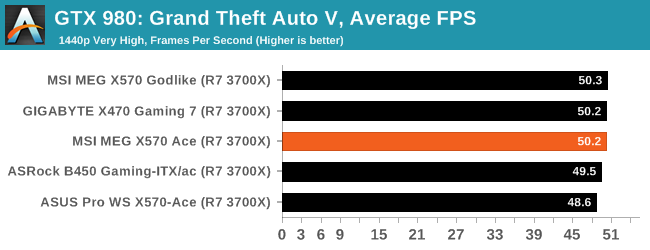
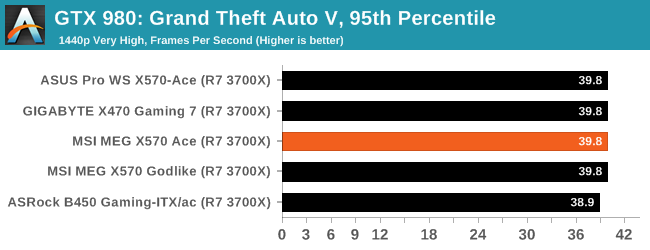
F1 2018
Aside from keeping up-to-date on the Formula One world, F1 2017 added HDR support, which F1 2018 has maintained; otherwise, we should see any newer versions of Codemasters' EGO engine find its way into F1. Graphically demanding in its own right, F1 2018 keeps a useful racing-type graphics workload in our benchmarks.
Aside from keeping up-to-date on the Formula One world, F1 2017 added HDR support, which F1 2018 has maintained. We use the in-game benchmark, set to run on the Montreal track in the wet, driving as Lewis Hamilton from last place on the grid. Data is taken over a one-lap race.
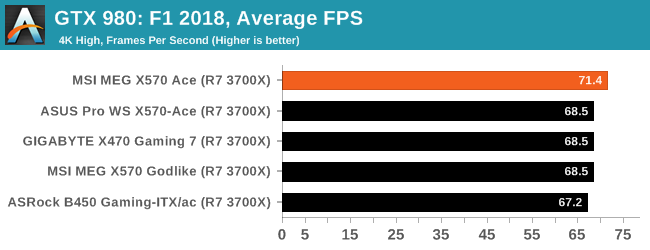
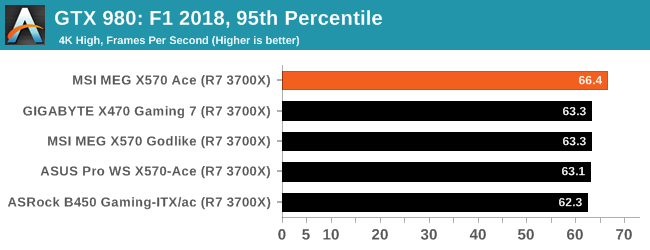
Overclocking Ryzen 3000
Experience with the MSI MEG X570 Ace
It's no secret that the general consensus of overclocking with the Ryzen 3000 series has been so far disappointing. Whether it be the limitations of the new 7 nm silicon or the insane temperatures that these processors run at when overclocked, or even at stock settings with the stock cooler, to unlock the full potential of these chips, better cooling methods such as premium AIOs and custom water cooling is needed.
Overclocking with the MSI MEG X570 Ace motherboard, there are three ways this can be achieved; within the firmware, with the simple, albeit effective tools inside the MSI Dragon Center application or with the comprehensive AMD Ryzen Master overclocking software. For the purpose of this review, we used the MSI Click BIOS 5 firmware which is very intuitive to use, and although this model was quite laggy, it still worked without issues. While the most commonly changed settings to overclock the processor include the CPU ratio which increases the frequency in increments of 100 MHz and the CPU VCore which increases the voltage pumped into the processor which not only generates extra heat but also increases power consumption.
In addition to the boost feature of the Ryzen 3000 processors, another AMD specific feature is called Precision Boost Overdrive or PBO. The three main variables that PBO works from including package power tracking (PPT), thermal design current (TDC), and the electrical design current (EDC). All three of these can be set within the firmware under the advanced section of the Precision Boost Overdrive menu, although MSI has included four different PBO profiles for users to select from. In addition to these are seven different Game Boost CPU overclocking profiles with each profile ranging from 4.0 GHz all cores up to 4.3 GHz all cores; these go up in increments of 50 MHz.
Overclocking Methodology
Our standard overclocking methodology is as follows. We select the automatic overclock options and test for stability with POV-Ray and OCCT to simulate high-end workloads. These stability tests aim to catch any immediate causes for memory or CPU errors.
For manual overclocks, based on the information gathered from the previous testing, starts off at a nominal voltage and CPU multiplier, and the multiplier is increased until the stability tests are failed. The CPU voltage is increased gradually until the stability tests are passed, and the process repeated until the motherboard reduces the multiplier automatically (due to safety protocol) or the CPU temperature reaches a stupidly high level (105ºC+). Our test bed is not in a case, which should push overclocks higher with fresher (cooler) air.
Overclocking Results
The 12+2 power delivery of the MSI MEG X570 Ace is one of the best we have seen from MSI in recent years and as a result, allowed us to manually overclock our Ryzen 7 3700X sample to 4.3 GHz with a set voltage of 1.375 V. Using the default load line calibration setting, this resulted in a load CPU VCore of 1.340 V which gives us a VDroop of 0.035 V in total. Of course, this can be alleviated by using a more aggressive LLC profile, but for the purposes of our testing, we leave this setting at auto. More voltage pumped into the CPU not only results in higher operating temperatures, but this also increases the overall power consumption.
Testing out each of MSI's seven Game Boost profiles did yield some interesting findings. First of all, each profile overvolted our Ryzen 3700X by a massive margin when you factor in what we achieved by using manual settings. Secondly, the three highest Game Boost profiles pumped insane amounts of CPU VCore in which in turn, made our 240mm AIO closed-loop cooler go into overdrive with temperatures in the triple digits. Outside of extreme overclocking, no Ryzen 3000 processor should be subjected to voltages of 1.562 V for a 4.3 GHz overclock on ambient cooling. Performance however was consistently higher with each of the profiles in our POV-Ray benchmark and by default with the Game Boost profiles, thermal throttling is disabled meaning that there is a trade-off between heat and performance. We also tested with PBO and found that performance was actually worse than the default settings, with MSI's four PBO profiles not really having much of an effect on performance; this leads us to believe for the most part, that PBO on Ryzen 3000 could do with a rework to make it more effective.
Power Delivery Thermal Analysis
One of the most requested elements of our motherboard reviews revolves around the power delivery and its componentry. Aside from the quality of the components and its capability for overclocking to push out higher clock speeds which in turn improves performance, is the thermal capability of the cooling solutions implemented by manufacturers. While almost always fine for users running processors at default settings, the cooling capability of the VRMs isn't something that users should worry too much about, but for those looking to squeeze out extra performance from the CPU via overclocking, this puts extra pressure on the power delivery and in turn, generates extra heat. This is why more premium models often include heatsinks on its models with better cooling designs, heftier chunks of metal, and in some cases, even with water blocks.
Testing Methodology
Our method of testing is going to focus on if the power delivery and its heatsink are effective at dissipating heat. We run an intensely heavy CPU workload for a prolonged method of time and apply an overclock which is deemed safe and at the maximum that the silicon on our AMD Ryzen 7 3700X processor allows. We then run the Prime95 with AVX2 enabled under a torture test for an hour at the maximum stable overclock we can, which puts insane pressure on the processor. We collect our data via three different methods which include the following:
- Taking a thermal image from a birds-eye view after an hour with a Flir Pro thermal imaging camera
- Securing two probes on to the rear of the PCB, right underneath CPU VCore section of the power delivery for better parity in case a probe reports a faulty reading
- Taking a reading of the VRM temperature from the sensor reading within the HWInfo monitoring application
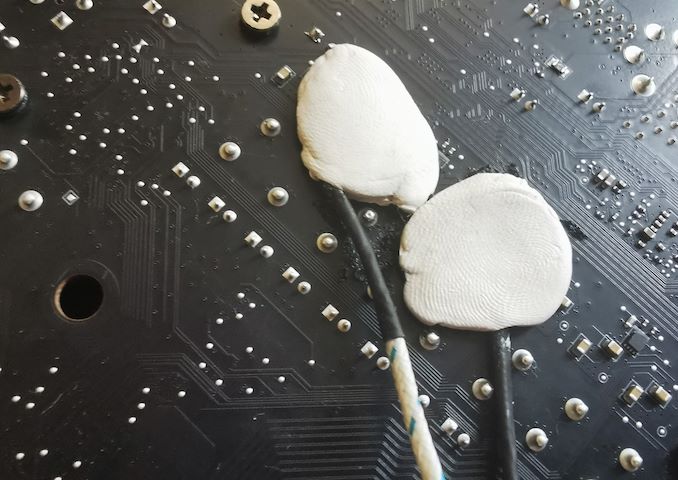
Two K-Type Thermal Probes attached to the rear of the power delivery on the MSI MEG X570 Ace
The reason for using three different methods is that some sensors can read inaccurate temperatures, which can give very erratic results for users looking to gauge whether an overclock is too much pressure for the power delivery handle. With using a probe on the rear, it can also show the efficiency of the power stages and heatsinks as a wide margin between the probe and sensor temperature can show that the heatsink is dissipating heat and that the design is working, or that the internal sensor is massively wrong. To ensure our probe was accurate prior to testing, I personally binned 10 and selected the most accurate (within 1c of the actual temperature) for better parity in our testing.
For thermal image, we use a Flir One camera as it gives a good indication of where the heat is generated around the socket area, as some designs use different configurations and an evenly spread power delivery with good components will usually generate less heat. Manufacturers who use inefficient heatsinks and cheap out on power delivery components should run hotter than those who have invested. Of course, a $700 flagship motherboard is likely to outperform a cheaper $100 model under the same testing conditions, but it is still worth testing to see which vendors are doing things correctly.
Thermal Analysis Results

We measured 61.2°C on PCB between the CPU socket and power delivery
The MSI MEG X570 Ace uses a 12-phase CPU VCore design with an International Rectifier IR35201 running in a 6+2 configuration with six IR3599 doublers for the VCore section. This is quite an effective design and should be more than capable of handling of reaching the thermal limits of the processor long before the VRM reaches its own limits. Its heatsink also features an interesting design as the aluminium heatsinks on the power delivery is connected via a heat pipe to the chipset heatsink which is channelled around the memory slots. The chipset heatsink is actively cooled and although it is designed to keep the X570 chipset cool, it should provide a little thermal relief to the power delivery; in theory at least.
As we get more results, we will endeavour to update this chart when more models have been tested
Note - The ASRock B450 Gaming ITX-ac model crashed instantly every time the small FFT torture test within Prime95 was initiated. At anything on the CPU VCore above 1.35 V would result in instant instability. The Ryzen Master auto-overclocking function failed every time it tried to dial in settings, but it does however operate absolutely fine at stock, and with Precision Boost Overdrive enabled. Either the firmware is the issue, or the board just isn't capable of overclocking the Ryzen 3700X with extreme workloads with what is considered a stable overclock on the X570 chipset. We will re-test this in the future.
Our thermal testing shows that not only is MSI's heatsink design effective on the MEG X570 Ace, but the power delivery actually dissipates heat appropriately. We ran our AMD Ryzen 7 3700X testbed sample at 4.1 GHz with a CPU VCore of 1.475 V just to generate as much pressure as we could. We did get thermal throttling when using the maximum allowed VCore of 1.55 V and decided to dial it back a touch. The sensor integrated into the power delivery gave us a reading of 66°C after an hour of our stress test, while our VRM probe temperature sensor on the rear of the PCB gave us a reading of 61°C. It was very warm in our test area at the time of testing with an ambient temperature of between 29 and 30°C, so this probably attributed to slightly warmer conditions than usual. One of the notable aspects was that we frequently hit CPU temperature limitations before we hit VRM thermal limitations. All-in-all, the MSI MEG X570 Ace performs well under our thermal testing conditions and we have no fears that this model won't handle overclocks on any of the current Ryzen 3000 range with its effective and efficient design.
MSI MEG X570 Ace Conclusion
The MSI MEG X570 Ace is an ATX motherboard which sits very much in the mid-range of the currently X570 product stack with an MSRP of $369. This has raised a lot of questions over social media as to why X570 comes with a higher price tag over previous the previous generations of X470 and X370 models. This is simple, the X570 models are better quality and the mid-range models such as this one come with a much better feature set as standard, as well as better quality componentry within. Another aspect is the addition of PCIe 4.0 and more native support for things like M.2 slots from the CPU and chipset, USB 3.1 G2 connectivity and on some models, the inclusion of additional high performance controllers.
In terms of its overall design, the X570 Ace is very similar to its Intel desktop variation, the MSI MEG Z390 Ace which we reviewed last year. The biggest difference visually is the fan intake grill on the X570 chipset heatsink which is a direct consequence of the chipset 11 W TDP; MSI has included a cooling fan to keep things running cool, which actually serves two purposes on this model. The power delivery heatsink and chipset heatsink are interconnected with a heatpipe, and in our thermal analysis the MSI MEG X570 has very cool running VRMs with our Ryzen 7 3700X at our maximum achieved overclock. On the rear panel cover is the MSI RGB Infinity Mirror which adds a bit of flair, but the most notable design comes in the gold accents which seems to be a direct shout out to AMD's 50 year anniversary, although not officially stated. Although the integrated RGB LEDs are primarily through the Infinity Mirror, MSI does include vast amounts of RGB LED connections for users to create a unique rainbow-like disco in their chassis. One thing we noted in our preview before launch, there is quite a noticeable amount of plastic around the board, especially the rear panel area and the chipset heatsink. This detracts slightly from the premium element, but it fits in well with the boards aesthetic; it doesn't detriment performance and is purely for visual effect.
For the feature set on offer which includes a long list including dual Ethernet ports on the rear panel, one 2.5 GbE and the other 1 GbE, a Realtek ALC1220 HD audio codec, and an Intel AX200 Wi-Fi 6 802.11ax wireless interface which also offers BT 5 connectivity. While the X570 Ace only includes four SATA ports, MSI has used the modular nature of the PCIe 4.0 lanes on the X570 chipset to provide a total of three PCIe 4.0 x4 M.2 slots. Each of these M.2 slots has its own heatsink which blends in with the aesthetic of the board. The top two full-length PCIe 4.0 slots are driven by the CPU which operate at x16 and x8/x8, whereas the bottom full-length slot comes via the X570 chipset and is locked down to x4.
Its overall performance is underpinned by the Ryzen 7 3700X we use on the test bench. In the majority of our test suite, the MSI MEG X570 Ace performs better than the B450/X470 models we have tested so far. Power consumption at full load was noticeably higher but can be attributed to a number of factors including CPU Vcore at default settings, as well as the X570 chipset which has a TDP of 11 W. In our new thermal VRM analysis testing, the MSI MEG X570 Ace performed very well and shows that the 12+2 power delivery running in a 6+2 configuration spearheaded by an International Rectifier IR35201 PWM controller. Putting it quite simply, the power delivery and heatsinks on the X570 Ace are very capable and stands it as one of the better designs seen from MSI over the years.
Looking at the overclocking performance, we managed to get 4.3 GHz out of our Ryzen 7 3700X albeit without the heavier AVX2 workloads, but with a CPU VCore of 1.375 V. MSI's pre-defined overclocking Game Boost profiles aren't great with way too many volts applied which resulted in CPU temperatures skyrocketing into triple-digit numbers. This is something MSI needs to go back to the drawing board on as 4.2 GHz does not require 1.558 of CPU VCore at full load; this resulted in a maximum temperature of 103 degrees Celcius even with a good quality 240 mm AIO CPU cooler installed. For users that intend to overclock their Ryzen 3000 processors, MSI has included a total of seven 4-pin fan headers which is quite impressive for a mid-range model.
At its current price point, the MSI MEG X570 Ace ($369) is in direct competition with a handful of models including the GIGABYTE X570 Aorus Master ($360), the ASUS ROG X570 Crosshair VIII Hero WIFI ($380), and the ASRock X570 Phantom Gaming X ($350), with the latter on paper comes with a very similar feature set but at a slightly lower price. The MEG X570 Ace has initial niggles including the laggy launch firmware and irrational overclocking presets, but marks a big step forward for MSI in terms of power delivery, and its networking capabilities. The MSI MEG X570 represents a good example of an enthusiast-level gaming themed board which steps things into another gear, which could, in turn, prove to be the ace in the hole of its current X570 product stack.
At the time of writing at Newegg, the current price for the MSI X570 Ace sits at $415. This is also reflected at Amazon US with a current selling price of $400. This is considerably more than the MSRP suggests and could be due to an issue with availability and stock levels as at both stores, the MSI X570 Ace is only available via third-party sellers. When Newegg and Amazon eventually receive stock, the price should drop down, but it would be recommended to check your local hardware stockist for pricing and availability. For the European markets, the MSI MEG X570 Ace is also available at Amazon UK with a price tag of £360, and at Amazon DE for 400€.
AnandTech Ryzen 3000 CPU and X570 Motherboard Coverage
- The AMD X570 Motherboard Overview: Over 35+ Motherboards Analyzed
- The AMD 3rd Gen Ryzen Deep Dive Review: 3700X and 3900X Raising The Bar
- AMD 16-Core Ryzen 9 3950X: Up to 4.7 GHz, 105W, Coming September
- AMD Zen 2 Microarchitecture Analysis: Ryzen 3000 and EPYC Rome
- AMD Ryzen 3000 Post-Review BIOS Update Recap: Larger ST Gains, Some Gains, Some Losses

